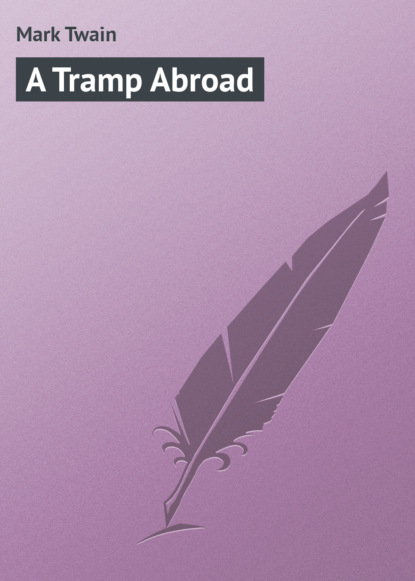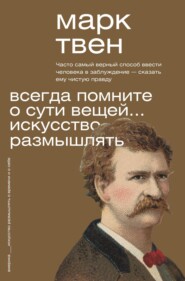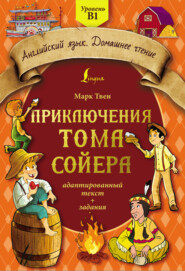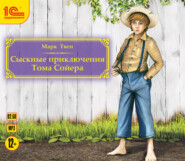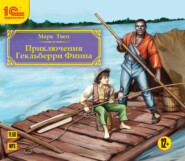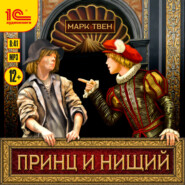По всем вопросам обращайтесь на: info@litportal.ru
(©) 2003-2025.
✖
A Tramp Abroad
Автор
Год написания книги
2015
Настройки чтения
Размер шрифта
Высота строк
Поля
’Possum. Coon.
Boston bacon and beans.
Bacon and greens, Southern style.
Hominy. Boiled onions. Turnips.
Pumpkin. Squash. Asparagus.
Butter beans. Sweet potatoes.
Lettuce. Succotash. String beans.
Mashed potatoes. Catsup.
Boiled potatoes, in their skins.
New potatoes, minus the skins.
Early rose potatoes, roasted in the ashes, Southern style, served hot.
Sliced tomatoes, with sugar or vinegar. Stewed tomatoes.
Green corn, cut from the ear and served with butter and pepper.
Green corn, on the ear.
Hot corn-pone, with chitlings, Southern style.
Hot hoe-cake, Southern style.
Hot egg-bread, Southern style.
Hot light-bread, Southern style.
Buttermilk. Iced sweet milk.
Apple dumplings, with real cream.
Apple pie. Apple fritters.
Apple puffs, Southern style.
Peach cobbler, Southern style
Peach pie. American mince pie.
Pumpkin pie. Squash pie.
All sorts of American pastry.
Fresh American fruits of all sorts, including strawberries which are not to be doled out as if they were jewelry, but in a more liberal way. Ice-water – not prepared in the ineffectual goblet, but in the sincere and capable refrigerator.
Americans intending to spend a year or so in European hotels will do well to copy this bill and carry it along. They will find it an excellent thing to get up an appetite with, in the dispiriting presence of the squalid table d’hôte.
Foreigners cannot enjoy our food, I suppose, any more than we can enjoy theirs. It is not strange; for tastes are made, not born. I might glorify my bill of fare until I was tired; but after all, the Scotchman would shake his head and say, “Where’s your haggis?” and the Fijian would sigh and say, “Where’s your missionary?”
I have a neat talent in matters pertaining to nourishment. This has met with professional recognition. I have often furnished recipes for cook-books. Here are some designs for pies and things, which I recently prepared for a friend’s projected cook-book, but as I forgot to furnish diagrams and perspectives, they had to be left out, of course.
Recipe for an ash-cake.
Take a lot of water and add to it a lot of coarse Indian-meal and about a quarter of a lot of salt. Mix well together, knead into the form of a “pone,” and let the pone stand awhile – not on its edge, but the other way. Rake away a place among the embers, lay it there, and cover it an inch deep with hot ashes. When it is done, remove it; blow off all the ashes but one layer; butter that one and eat.
N.B. – No household should ever be without this talisman. It has been noticed that tramps never return for another ash-cake.
Recipe for new English pie.
To make this excellent breakfast dish, proceed as follows: Take a sufficiency of water and a sufficiency of flour, and construct a bullet-proof dough. Work this into the form of a disk, with the edges turned up some three-fourths of an inch. Toughen and kiln-dry in a couple days in a mild but unvarying temperature. Construct a cover for this redoubt in the same way and of the same material. Fill with stewed dried apples; aggravate with cloves, lemon-peel, and slabs of citron; add two portions of New Orleans sugars, then solder on the lid and set in a safe place till it petrifies. Serve cold at breakfast and invite your enemy.
Recipe for German coffee.
Take a barrel of water and bring it to a boil; rub a chicory berry against a coffee berry, then convey the former into the water. Continue the boiling and evaporation until the intensity of the flavor and aroma of the coffee and chicory has been diminished to a proper degree; then set aside to cool. Now unharness the remains of a once cow from the plow, insert them in a hydraulic press, and when you shall have acquired a teaspoon of that pale-blue juice which a German superstition regards as milk, modify the malignity of its strength in a bucket of tepid water and ring up the breakfast. Mix the beverage in a cold cup, partake with moderation, and keep a wet rag around your head to guard against over-excitement.
To carve fowls in the German fashion.
Use a club, and avoid the joints.
Chapter L
I wonder why some things are? For instance, Art is allowed as much indecent license today as in earlier times – but the privileges of Literature in this respect have been sharply curtailed within the past eighty or ninety years. Fielding and Smollett could portray the beastliness of their day in the beastliest language; we have plenty of foul subjects to deal with in our day, but we are not allowed to approach them very near, even with nice and guarded forms of speech. But not so with Art. The brush may still deal freely with any subject, however revolting or indelicate. It makes a body ooze sarcasm at every pore, to go about Rome and Florence and see what this last generation has been doing with the statues. These works, which had stood in innocent nakedness for ages, are all fig-leaved now. Yes, every one of them. Nobody noticed their nakedness before, perhaps; nobody can help noticing it now, the fig-leaf makes it so conspicuous. But the comical thing about it all, is, that the fig-leaf is confined to cold and pallid marble, which would be still cold and unsuggestive without this sham and ostentatious symbol of modesty, whereas warm-blood paintings which do really need it have in no case been furnished with it.
At the door of the Uffizzi, in Florence, one is confronted by statues of a man and a woman, noseless, battered, black with accumulated grime – they hardly suggest human beings – yet these ridiculous creatures have been thoughtfully and conscientiously fig-leaved by this fastidious generation. You enter, and proceed to that most-visited little gallery that exists in the world – the Tribune – and there, against the wall, without obstructing rag or leaf, you may look your fill upon the foulest, the vilest, the obscenest picture the world possesses – Titian’s Venus. It isn’t that she is naked and stretched out on a bed – no, it is the attitude of one of her arms and hand. If I ventured to describe that attitude, there would be a fine howl – but there the Venus lies, for anybody to gloat over that wants to – and there she has a right to lie, for she is a work of art, and Art has its privileges. I saw young girls stealing furtive glances at her; I saw young men gaze long and absorbedly at her; I saw aged, infirm men hang upon her charms with a pathetic interest. How I should like to describe her – just to see what a holy indignation I could stir up in the world – just to hear the unreflecting average man deliver himself about my grossness and coarseness, and all that. The world says that no worded description of a moving spectacle is a hundredth part as moving as the same spectacle seen with one’s own eyes – yet the world is willing to let its son and its daughter and itself look at Titian’s beast, but won’t stand a description of it in words. Which shows that the world is not as consistent as it might be.
There are pictures of nude women which suggest no impure thought – I am well aware of that. I am not railing at such. What I am trying to emphasize is the fact that Titian’s Venus is very far from being one of that sort. Without any question it was painted for a bagnio and it was probably refused because it was a trifle too strong. In truth, it is too strong for any place but a public Art Gallery. Titian has two Venuses in the Tribune; persons who have seen them will easily remember which one I am referring to.
In every gallery in Europe there are hideous pictures of blood, carnage, oozing brains, putrefaction – pictures portraying intolerable suffering – pictures alive with every conceivable horror, wrought out in dreadful detail – and similar pictures are being put on the canvas every day and publicly exhibited – without a growl from anybody – for they are innocent, they are inoffensive, being works of art. But suppose a literary artist ventured to go into a painstaking and elaborate description of one of these grisly things – the critics would skin him alive. Well, let it go, it cannot be helped; Art retains her privileges, Literature has lost hers. Somebody else may cipher out the whys and the wherefores and the consistencies of it – I haven’t got time.
Titian’s Venus defiles and disgraces the Tribune, there is no softening that fact, but his “Moses” glorifies it. The simple truthfulness of its noble work wins the heart and the applause of every visitor, be he learned or ignorant. After wearying one’s self with the acres of stuffy, sappy, expressionless babies that populate the canvases of the Old Masters of Italy, it is refreshing to stand before this peerless child and feel that thrill which tells you you are at last in the presence of the real thing. This is a human child, this is genuine. You have seen him a thousand times – you have seen him just as he is here – and you confess, without reserve, that Titian was a Master. The doll-faces of other painted babes may mean one thing, they may mean another, but with the “Moses” the case is different. The most famous of all the art-critics has said, “There is no room for doubt, here – plainly this child is in trouble.”
I consider that the “Moses” has no equal among the works of the Old Masters, except it be the divine Hair Trunk of Bassano. I feel sure that if all the other Old Masters were lost and only these two preserved, the world would be the gainer by it.
My sole purpose in going to Florence was to see this immortal “Moses,” and by good fortune I was just in time, for they were already preparing to remove it to a more private and better-protected place because a fashion of robbing the great galleries was prevailing in Europe at the time.
I got a capable artist to copy the picture; Pannemaker, the engraver of Doré’s books, engraved it for me, and I have the pleasure of laying it before the reader in this volume.[16 - See Frontispiece.]
We took a turn to Rome and some other Italian cities – then to Munich, and thence to Paris – partly for exercise, but mainly because these things were in our projected program, and it was only right that we should be faithful to it.
From Paris I branched out and walked through Holland and Belgium, procuring an occasional lift by rail or canal when tired, and I had a tolerably good time of it “by and large.” I worked Spain and other regions through agents to save time and shoe-leather.





